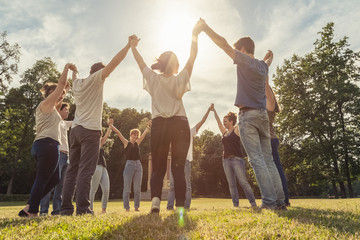The most common way people contribute to their local communities is by volunteering their time and energy. This can include helping out at a soup kitchen or an after-school program.

Attending community meetings is another important way to get involved, as this is where critical decisions about your town are made. Keeping your neighborhood clean by organizing a group or simply picking up litter is also a wonderful way to give back.
Volunteering
Volunteerism is the act of a person giving his or her time and services for the benefit of others without receiving any monetary compensation. It is the most common way people contribute to their local communities and has many benefits, both for the community and for the individual volunteer.
Volunteers address societal needs that are often overlooked or underfunded by both governmental and private sectors, from education to healthcare to emergency relief. This direct impact improves lives and makes communities stronger. It is also a powerful tool for personal growth and development, allowing volunteers to learn new skills and experiences while developing their social network and boosting self-esteem.
Many volunteers are looking for ways to get involved in their community, find a new hobby, sharpen their skills, or stay active during retirement. This is a great way to meet new people with shared interests and make friends. This type of volunteer work also carries a high level of physical activity, for example, when planting a garden, walking dogs, or helping to set up chairs at a public event.
Attending City Council and Board Meetings
City council meetings (and similar local government bodies) are a great place to learn about and discuss issues that directly affect you and those living in your area. Attending these meetings will give you a much deeper understanding of how your local politics work and how decisions are made.
At every meeting, citizens are allowed to speak to elected officials during public comment periods. Typically, this is done right after the Pledge of Allegiance and Invocation and before the roll call, with each person being allowed three minutes at the podium.
Many cities have their own rules regarding when members of the public can speak, whether they can only address items on the agenda, and how long they will be given to speak. Attending a meeting and knowing the rules will help you prepare your speech to be heard effectively. During these sessions, the presiding official may stop any public comments that are uncivil, contentious, or disruptive. They may also ask that dissenting comments be communicated to them after the meeting. This way, they are recorded in council minutes as opposed to the back-and-forth exchanges at the meeting itself.
Organizing a Charity
There are many ways to support local charities and non-profit organisations through monetary donations, volunteering time, or simply spreading the word. You can talk about these organisations and their work with friends in casual conversations or post about them on social media. It’s an effortless yet powerful way to contribute.
Organising a charity event is an excellent opportunity to mobilise engagement around a specific cause, whether it’s a fundraising campaign for an ongoing crisis or a new association project. The key is to determine the main objective of your charity event from the beginning, as this will influence the choice of venue, the call for donations, and the participation of teams.
The choice of theme is also important, as it will capture participants’ attention and increase their motivation to participate. You should also think about varying how you collect and process donations to maximise your financial goals and encourage those who cannot attend to give their support anyway. You can, for example, include a branded donation platform on your event website or launch a crowdfunding campaign.
Taking Matters Into Your Own Hands
When people can’t or don’t want to rely on the government or other organizations for help, they sometimes take matters into their own hands. This can include anything from helping a neighbor, family member, or friend in need to dealing with a local problem directly, such as hiring security for a block or neighborhood or cleaning up a public nuisance.
This type of action is often referred to as civic participation and is an important part of healthy communities. It allows people to meet their basic needs and develop a sense of belonging to the place they call home.
Another way people participate in their community is by shopping locally and supporting the local economy. This keeps money in the area where it can be reinvested into other businesses and services, creating a positive cycle that benefits everyone. These types of actions are also known as grassroots activism and community power.
Getting Involved in Local Politics
Local politics offer a number of ways to make a direct impact on your community. You can volunteer for a campaign, attend city council or board meetings, or speak out on issues that affect you and your neighbors.
The most effective way to engage in local politics is to become informed on current events, including policies and proposals by your elected representatives. Subscribing to local news outlets and attending city council meetings (many of which are streamed online) provides insight into your community’s decision-making process. Calling your local representatives and organizing a group of friends to call their in-district offices on the same day can ensure your voice is heard.
Many community organizations and advocacy groups are deeply involved in advocating for policy changes on a local level, and becoming a member offers a platform to influence these decisions. Participating in these movements amplifies your political influence and highlights the democratic principle of people-powered change. You can also support these efforts by donating or volunteering your time. Lastly, encouraging and supporting residents to run for office or lead community initiatives can further drive change.